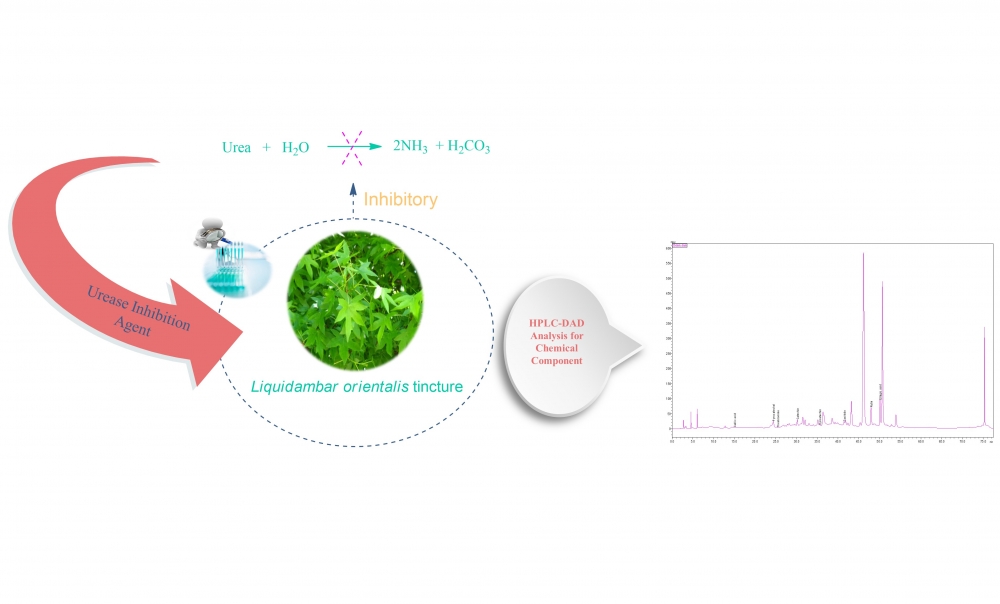JOURNAL 3095
Records of Agricultural and Food Chemistry
Year: 2024 Issue: 3 Special Issue: Abstracts 3rd. TCS, International Food Chemistry Congress February 29-March 03,2024 Antalya Türkiye
p.34 - 34
Viewed 1152 times.
GRAPHICAL ABSTRACT

ABSTRACT
Urease catalyzes the hydrolysis of urea and has received significant attention due to its effects on living organisms' health and quality of life. The persistence of urease activity in human and animal cells may cause some diseases and pathogen infections. Urease can be a virulence factor of infections in the urinary and gastrointestinal tracts. It protects the bacteria from the low pH in the gastric fluid by creating CO2 and NH4+ from urea with the urease enzyme secreted by Helicobacter pylori after colonizing. However, besides being toxic to gastric epithelial cells, NH4+ increases the effect of cytotoxins secreted by the agent by reducing intercellular adhesion. This formation can cause gastritis, peptic ulcer, and gastritis cancer. In this context, proton-providing and urease inhibitors are used to treat H. pylori infection. Urease inhibitors also offer effective therapies in the treatment of diseases caused by urease-dependent pathogenic microorganisms. Urease inhibitors such as phosphorodiamidates, hydroxamic acid derivatives, and imidazoles have limited clinical use because they are toxic and have low stability [1]. In this context, research focuses on the potential of natural products (present in standardized extracts or pure compounds) as clinical urease inhibitors continue to increase [2]. Liquidambar orientalis, which dates to the 6th and 7th centuries, is rich in phenolic compounds. It is generally known as sweetgum or amber tree (amber tree) in Turkey. It is reported that Liquidambar oils were used as medicine in the "Ala'im-i Surgery" (16th-century medical book). It has been utilized in treating skin diseases such as fungus and scabies and treating stomach problems, asthma and bronchitis [3]. Tinctures, which have an effect based on experimentation and proof and an impact that has been going on traditionally for centuries, are still widely used therapeutically today [4]. Tinctures are the most effective form of herbal medicine and are an ancient method. Tinctures are the most commonly used form of medicine in herbal treatments such as homoeopathy, phytotherapy, and Bach flower therapy. Tinctures prepared with alcohol may have an extended shelf life if appropriately prepared. In this study, twenty-four tinctures, which may present natural urease inhibitor potential, were prepared in various plant/solvent ratios at different percentages of ethanol/water mixtures from the leaves of the endemic L. orientalis. The phenolic content of each L. orientalis leaf tincture is determined by HPLC-DAD [5]. The urease inhibitory activity of all tinctures was defined according to the Weatherburn method. [6]. The tincture prepared in 1/1 ethanol/water exhibited the best inhibitory activity with the highest amount of phenolic ingredients.
KEYWORDS- Liquidambar orientalis
- tincture
- urease inhibition activity
- HPLC-DAD